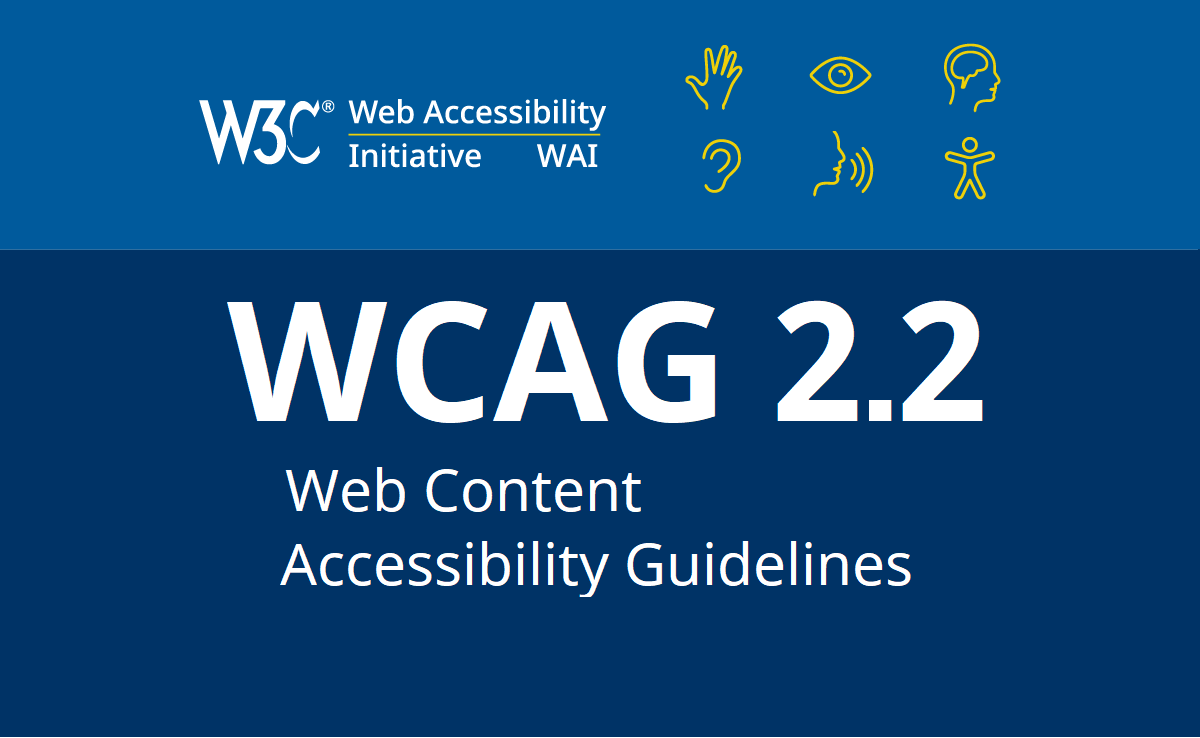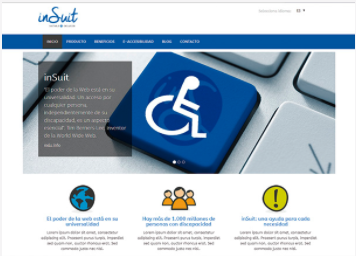

On October 5, 2023, a significant milestone in web accessibility was marked with the publication of the long-awaited Web Content Accessibility Guidelines (WCAG) recommendation.
This set of guidelines has long been the global guide to ensuring online accessibility, and its latest update promises to further raise the standards in the creation of inclusive digital content.
WCAG 2.2 aims to expand accessibility for users with cognitive or learning disabilities, enhance the experience for those with low vision, and optimize navigation from mobile devices.
The latest version incorporates nine new criteria while bidding farewell to criterion 4.1.1: Parsing at level A. This change is applied because assistive products no longer depend on direct analysis of HTML code, thus eliminating the issues that originally motivated the creation of this criterion.
Is it time to implement WCAG 2.2?
This is the question of the day, as legal obligation awaits the review of EN 301 549, which applies to the European Union and Spain, and is currently in process.
However, to clarify any doubts, the W3C has indicated that meeting the requirements of the new WCAG 2.2 places you in a situation of full compliance with the previous WCAG 2.1.
With all this in mind, the recommendation is to familiarize yourself and begin integrating the new criteria. To this end, we have prepared this article, a text that explores the implications of the update providing insights on its practical application.
So take note and dive into the keys of this update, discover how it will affect accessibility policies, and always stay informed about the future of web accessibility guidelines.
New Success Criteria Updated in WCAG 2.2
As we have mentioned, the new update involves 9 points to consider, which were open to review, comments, and changes; to finally be approved as part of the Final Recommendation. The list of new success criteria are:
2.4.11 Unobscured Focus (Minimum) (Level AA)
The purpose of this criterion is to ensure that the element that acquires keyboard focus is always partially visible in the user’s viewport.
For users with vision who navigate through the keyboard and for those who depend on devices that operate through the keyboard interface, such as switches or voice input, knowing the location of the current focus is essential.
Thus, it acts as a key indicator of the point of interaction on the page. If users cannot visualize the focused element, they might face difficulties in understanding how to proceed or even interpret that the system is not responding.
2.4.12 Unobscured Focus (Enhanced) (Level AA)
This criterion shares similarities with the previous one but adopts a more rigorous approach. In this case, when keyboard focus is received, no content can hide parts of the focus indicator of the component in the user interface.
In other words, the distinction lies in the requirement that the entirety of the focused component be visible, with no part obstructed.
2.4.13 Focus Appearance (Level AAA)
Initially, this criterion was conceived as a level AA criterion but due to its complexity, it has been decided to leave it as level AAA, acting in synergy with criteria 2.4.7 and 1.4.11.
Criterion 2.4.7 “Visible Focus” requires that keyboard focus be perceptible. The purpose of this new criterion is to complement this rule, ensuring that keyboard focus is not only visible but also clearly discernible.
Additionally, criterion 1.4.11 “Non-Text Contrast AA,” requires that the keyboard focus have at least a 3:1 contrast ratio, and that the interaction component maintain an adequate contrast with the background both in its default state and when focused.
Therefore, the new criterion 2.4.13 is presented in a simplified manner, clearly defining that, when the keyboard focus indicator is visible, it must meet the following requirements:
- Have at least the same size as the area of a perimeter of 2 pixels thickness of the component or subcomponent without focus.
- Maintain a contrast ratio of at least 3:1 between the pixels in the focus and non-focus states.
2.5.7 Dragging Movements (Level AA)
We know that applying the drag-and-drop action requires a fairly precise movement, which consists of keeping the finger on the button on the screen without releasing it.
This action can be quite difficult for people with some motor disability, which is why this criterion seeks that the action of dragging and dropping can be performed in a different way than we already know.
2.5.8 Target Size (Minimum) (Level AA)
This guideline proposes a minimum distance between interaction elements so that people who do not have fine hand movements can activate small buttons more easily and without the risk of making mistakes.
3.2.6 Consistent Help (Level A)
With the aim of making it easy for users to find the help they need, this criterion establishes that help functions found on various pages of the website appear in the same place.
This is intended to help people with cognitive disabilities, who often need to follow a pattern to complete their tasks.
3.3.7 Redundant Input (A)
The purpose of this criterion is to ensure that users can successfully complete multi-step processes. It aims to reduce cognitive load by requiring information more than once during a process, thus reducing the need to remember data provided in previous steps.
Information that is crucial to remember can represent a significant obstacle for users facing cognitive or memory difficulties. This criterion seeks to alleviate that burden, making processes more accessible and less demanding for this group of users.
3.3.8 Accessible Authentication (Minimum) (Level AA)
This criterion aims to make authentication more accessible, eliminating the need to perform cognitive function tests (such as remembering passwords or solving puzzles) at each step of the authentication process.
Unless the step in question meets the following:
- Existence of another authentication method that does not depend on a cognitive function test.
- That there is a mechanism available to help the user complete the cognitive function test.
- That the cognitive function test involves object recognition.
- That the cognitive function test aims to identify non-textual content provided by the user to the website.
3.3.9 Accessible Authentication (Enhanced) (AAA)
This criterion, despite being similar to the previous one, adopts a more rigorous stance. Here, the only alternative to the cognitive function test allowed is the presence of another alternative authentication method or a help mechanism.
The option of the test being based on object recognition or the identification of non-textual content by the user is not accepted.
inSuit takes into account the new WCAG 2.2 for its updates on its accessibility platform and 360 services
Thus, WCAG 2.2 seeks to cover, increasingly, the needs that people with disabilities may present, offering them a web accessibility solution that allows them to navigate freely and autonomously through the network.
From inSuit, we continue with our commitment to make constant updates to our products and services based on the novelties that arise in the Web Content Accessibility Guidelines (WCAG).
Our team of digital accessibility experts is already working to the fullest to ensure that our solutions are aligned with the new WCAG 2.2. Always seeking to offer a web accessibility service that adapts to national and international regulations, and trying to always be one step ahead.
So, if you are looking for a solution so that your page is accessible in a way that is aligned with the requirements specified in the new WCAG 2.2, contact us without any obligation.


